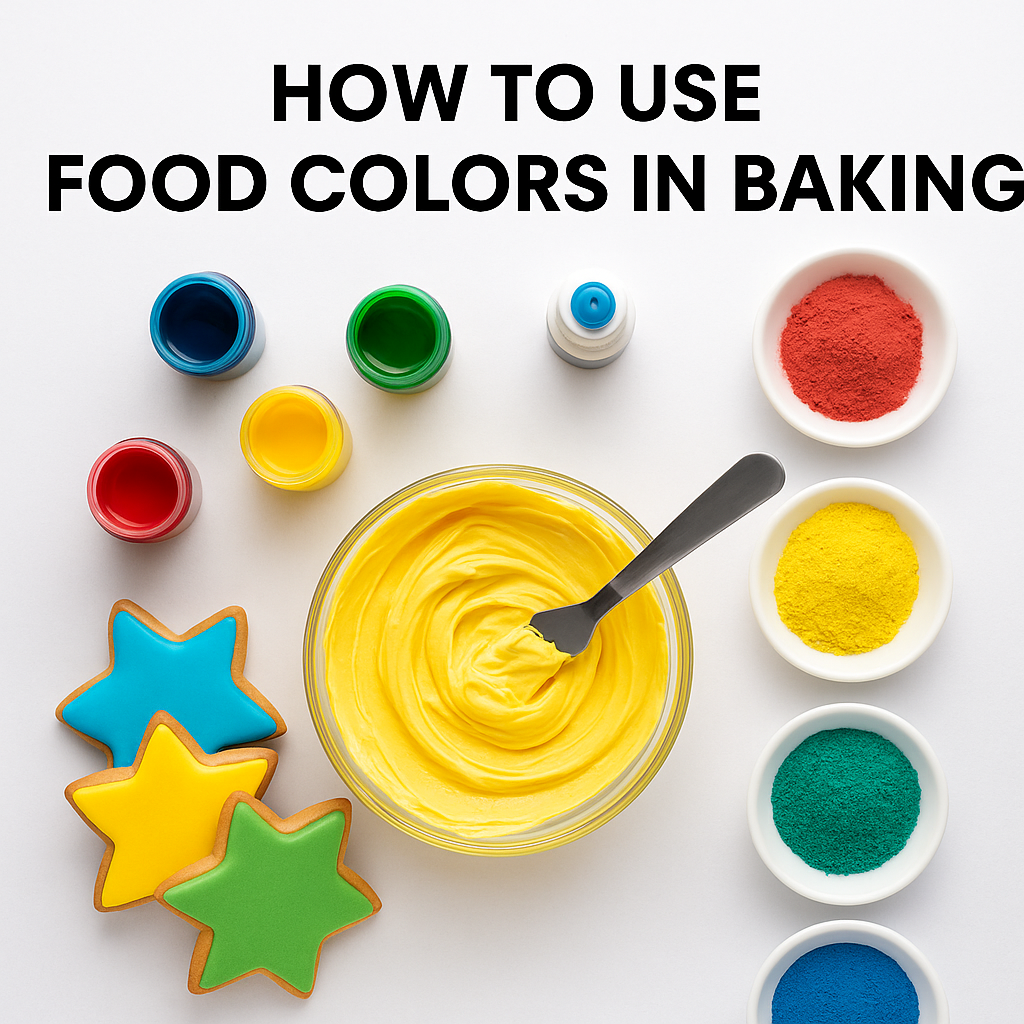Food color is like a creative tool that influences both the appearance and perception of your desserts. But using food coloring correctly can be confusing. From choosing between gel food color and food coloring powder to understanding how natural food color powder works, the variety of options can lead to mistakes that affect both your recipe and your results.
Many bakers, especially beginners, struggle with dull shades, uneven coloring, or colors that fade during baking. Some worry about artificial food coloring health risks, while others find that their chosen color ruins the texture of their dough or batter. These frustrations often come from not knowing which type of food coloring to use, how to measure it, or when to add it during the baking process.
This blog will simplify everything. We’ll explain the different types of food coloring, show you how to use each one effectively, and highlight common errors to avoid. Whether you’re decorating cookies or tinting cake batter, you’ll learn how to use food color in baking with confidence.
Understanding Types of Food Coloring
Food color comes in several forms, each suited to specific baking needs. The most common types include liquid food coloring, gel food color, food coloring powder, and food color spray. Each has different strengths, and choosing the right one can affect the color payoff and your final result.
Liquid food coloring is water-based and easy to mix, making it suitable for light pastel tones in batters and frostings. However, it can dilute your mixture if overused.
Gel food color is highly concentrated and doesn’t add extra liquid to your recipe. It’s a favorite for vibrant tones, especially in icings, buttercream, and fondant.
Food coloring powder is dry and potent. It works well for recipes that can’t tolerate extra moisture—such as macarons or chocolate.
Food color spray, also called color mist, is typically used for finishing touches on decorations or adding color gradients. It’s best used after baking.
How to Use Food Colors in Baking
Using food color in baking isn’t just about adding a few drops. It requires understanding your ingredients, how the color behaves under heat, and how to mix it evenly. Start by choosing the right type of food coloring for your purpose.
If you’re tinting dough, frosting, or fondant, start with a small amount and gradually build intensity. Always use a toothpick or clean spatula to transfer gel or powder colors to avoid contamination.
For dry recipes, food coloring powder is ideal. Just mix it with a few drops of alcohol (like vodka) or clear extract to make a paint for details, or dust it on fondant for a matte effect. This is especially useful if you’re learning how to use powder food coloring effectively.
If you’re using natural food color powder, keep in mind it may produce more muted tones compared to synthetic options. That’s not a flaw—it’s a sign of clean, plant-based ingredients.
Coloring Tips for Specific Bakes
In cookies and dough
Use gel food color or powder. Liquid food coloring can make dough sticky.
In buttercream
Gel food colors mix in well and produce bright, consistent tones. Let your buttercream sit after coloring—it darkens as it rests.
In cake batters
Choose gel or liquid food coloring, but avoid adding too much. Too much color can change the flavor and texture of the batter.
In chocolates
Use oil-based colors or coloring powder. Water-based colors can cause chocolate to seize.
Mistakes to Avoid When Using Food Color
One common mistake is using too much food color, especially with liquid types. Overuse can affect both the flavor and structure of your dessert. If you’re aiming for a deep hue, use concentrated gel or powder instead.
Another issue is uneven mixing. If your batter or frosting isn’t thoroughly mixed, you’ll end up with streaks or blotches. Always mix in a circular motion and scrape the sides of your bowl frequently.
Don’t use the wrong type of color for your medium. For example, adding water-based liquid color to chocolate or fondant can cause them to break or seize.
Health Considerations: Artificial vs. Natural Food Coloring
Artificial food coloring has raised some health concerns, especially in relation to hyperactivity in children. While studies have shown mixed results, many bakers opt for natural food color powder for peace of mind.
Natural food coloring is made from ingredients like beetroot, spirulina, and turmeric. While the colors are softer and may not survive high heat as well as artificial ones, they’re ideal for frostings, fillings, and no-bake recipes.
For those concerned with artificial food coloring health risks, check your product labels carefully or look for brands that clearly state they use plant-based or chemical-free dyes.
Making Homemade Food Coloring
If you prefer full control over your ingredients, you can make homemade food coloring using fruits and vegetables. For example, red can come from beets, yellow from turmeric, and green from spinach. Just blend, strain, and reduce them to a thick liquid or paste.
While homemade options are natural and appealing, they often require refrigeration and don’t have the same shelf life as store-bought versions.
Final Tips for Success
- Use separate bowls for each color.
- Always color in natural light to see the real shade.
- Start with less and build up gradually.
- Store food colors in a cool, dry place away from sunlight.
Conclusion
Learning how to use food colors in baking adds creativity and fun to your recipes—but it also requires a good understanding of which types to use and how to apply them. By choosing the right coloring method and avoiding common mistakes, you’ll get vibrant, smooth, and safe results every time.
Unlock the full potential of your baking with EFA’s premium food colors. Whether it’s gel, powder, or natural shades—you’ll bake smarter, bolder, and more beautifully..

